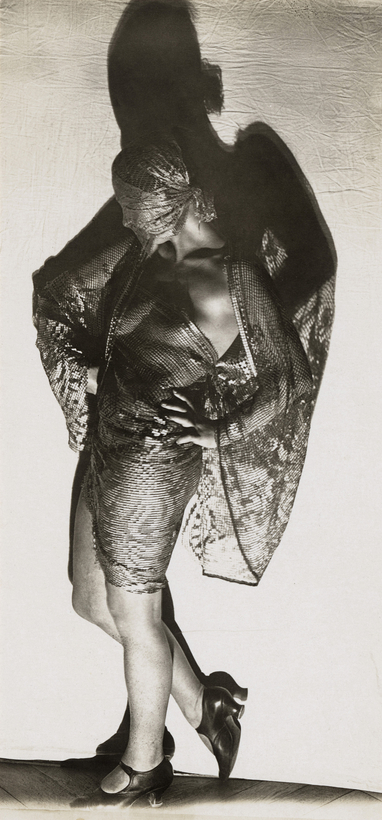Career. Reputation. Legacy. In the art world, these can all hang by a thread. No one knew this better than Marta Astfalck-Vietz, a photographer and painter who operated during the heady days of late-1920s Weimar Berlin. Astfalck-Vietz was an experimental pioneer of the “combi-photo” and a taboo-breaking explorer of her own body, but her entire archive of negatives was destroyed in 1943, when an Allied bombing raid incinerated her studio. That we have anything to look at in the 21st century is due to the fact that she often sent folders of her work to her father, Reinhold, who kept the photographs safe. A collection of them is now on view at the Berlinische Galerie Museum of Modern Art, in an exhibition that opened yesterday, “Staging the Self: Marta Astfalck-Vietz.”

Like so many Weimar-era free spirits, Astfalck-Vietz saw her career abruptly hobbled by the political ascent of Adolf Hitler, which began in 1933. By the middle of the decade, she had virtually ceased working as a photographer, instead devoting her time to intricately detailed watercolors of plants, flowers, and shrubs. Nor was she helped by a self-confessed naïveté when it came to claiming credit for her work, and so Astfalck-Vietz’s name disappeared from the record.
Until, that is, the late 1980s, when the curator Janos Frecot turned up a couple of striking prints that had been left to the Akademie der Künste—a state-run collection then held in West Berlin. They were part of a bequest made by the prominent photographer Heinz Hajek-Halke, who died in 1983.

Frecot included the photos in an exhibition at the Gropius Bau called “Photography as Photography,” and learned from a chance visitor to the gallery that the otherwise unknown woman whose name was stamped on the back—“Marta Vietz”—was alive and well and living in Celle, in northern Germany. Frecot duly trundled north and, over glasses of artichoke liqueur mixed with champagne, was amazed to discover a trove of photographs, mostly from the late 1920s, slap-bang in the middle of Germany’s interwar glory years—that amazing period of creativity and artistic radicalism.

Vietz—her surname until she married the architect Hellmuth Astfalck, in 1929—initially trained as a textile designer and painter, but thanks to the intellectually promiscuous temper of the time, she turned to photography. It was then, significantly, that Hajek-Halke turned up in her life. The pair started to collaborate on complex multiple-exposure images (they called them combi-photos) and designed promotional materials for the now classic silent film Berlin: Symphony of a Great City. Astfalck-Vietz later said she operated on “blind faith.” It appears that Hajek-Halke, who after the war would become a member of the experimental Fotoform group, took sole credit for much of their published work.
Though they remained friends, the aftermath seemed to be complex and bitter. In a 1992 documentary on Astfalck-Vietz, made two years before her death, she sounded disenchanted with her former collaborator. “He wouldn’t have made it without me,” she said, but accepted that she may not have gotten anywhere without him.

So what are we left with, almost a century on? Positioned by Frecot as midway between the Victorian arrangements of Clementina Hawarden and the shifting identities of Cindy Sherman, Astfalck-Vietz’s photography is a delicate blend of artful theatricality and self-scrutiny. In many of her images of herself she is nude—one thinks of Francesca Woodman, minus the macabre undertones—and holds dramatic, enigmatic, occasionally confrontational poses; sometimes she is swathed in exotic fabrics or elaborate costumes. Another vein of photographs offers intense close-ups of isolated body parts—hands, legs, feet—modeled by celebrated dancers of her acquaintance.

And then there are the combi-photos—montages of two and three images, jagged design, and unexpected juxtapositions. Here is evidence of a restless, searching spirit that brackets Astfalck-Vietz with the leading experimentalists of her time. It’s an extraordinary collection of material, and so nearly lost forever.
“Staging the Self: Marta Astfalck-Vietz” is on at the Berlinische Galerie Museum of Modern Art, in Berlin, until October 13
Andrew Pulver writes about film for The Guardian and about art for The Art Newspaper. He lives in Oxford

